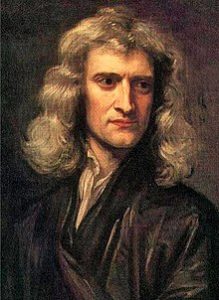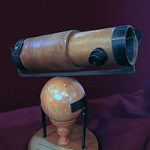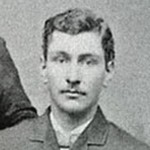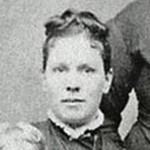justice of the peace
 Most of us think of Isaac Newton for things like Newtonian mechanics, Universal gravitation, Calculus, Newton’s laws of motion, Optics, Binomial series, Principa, and Newton’s method…ok, maybe not, I doubt if most of us know what most of that means, but we knew that he was a great mathematician. Newton was an English mathematician, but he was also a physicist, astronomer, theologian, and author who is widely recognized as one of the most influential scientists of all time, and a key figure in the scientific revolution.
Most of us think of Isaac Newton for things like Newtonian mechanics, Universal gravitation, Calculus, Newton’s laws of motion, Optics, Binomial series, Principa, and Newton’s method…ok, maybe not, I doubt if most of us know what most of that means, but we knew that he was a great mathematician. Newton was an English mathematician, but he was also a physicist, astronomer, theologian, and author who is widely recognized as one of the most influential scientists of all time, and a key figure in the scientific revolution.
Politically and personally, Newton was tied to the Whig party, an early version of the Republican Party. He served two brief terms as Member of Parliament for the University of Cambridge, in 1689-1690 and 1701-1702. He was noted by Cambridge diarist Abraham de la Pryme to have rebuked students who were frightening locals by claiming that a house was haunted. Newton moved to London to take up the post of warden of the Royal Mint in 1696, a position that he had obtained through the patronage of Charles Montagu, 1st Earl of Halifax, then Chancellor of the Exchequer. He took charge of England’s great recoining, trodden on the toes of Lord Lucas, Governor of the Tower, and secured the job of deputy comptroller of the temporary Chester branch for Edmond Halley. Newton became perhaps the best-known Master of the Mint upon the death of Thomas Neale in 1699. It was a position Newton held for the last 30  years of his life, and one of which he was very proud. These appointments were intended as type of figurehead position, but Newton took his job seriously. He retired from his Cambridge duties in 1701, and exercised his authority to reform the currency and punish clippers and counterfeiters. As Warden, and afterwards as Master, of the Royal Mint, Newton estimated that 20% of the coins taken in during the Great Recoinage of 1696 were counterfeit. Counterfeiting was high treason, which was punishable by the felon being hanged, drawn, and quartered. Despite that, it would be very difficult to convict even the most flagrant criminals. Nevertheless, Isaac Newton proved to be equal to the task.
years of his life, and one of which he was very proud. These appointments were intended as type of figurehead position, but Newton took his job seriously. He retired from his Cambridge duties in 1701, and exercised his authority to reform the currency and punish clippers and counterfeiters. As Warden, and afterwards as Master, of the Royal Mint, Newton estimated that 20% of the coins taken in during the Great Recoinage of 1696 were counterfeit. Counterfeiting was high treason, which was punishable by the felon being hanged, drawn, and quartered. Despite that, it would be very difficult to convict even the most flagrant criminals. Nevertheless, Isaac Newton proved to be equal to the task.
Disguised as a frequent patron of bars and taverns, he gathered much of that evidence himself. For all the barriers placed to prosecution, and separating the branches of government, English law still had ancient and formidable customs of authority. Newton had been made a justice of the peace in all the home counties. A draft letter regarding the matter is included in Newton’s personal first edition of Philosophiæ Naturalis Principia Mathematica, which he must have been amending at the time. Then he conducted more than 100 cross- examinations of witnesses, informers, and suspects between June 1698 and Christmas 1699. Newton successfully prosecuted 28 coiners. In April 1705, Queen Anne knighted Newton during a royal visit to Trinity College, Cambridge. The knighthood is likely to have been motivated by political considerations connected with the Parliamentary election in May 1705, rather than any recognition of Newton’s scientific work or services as Master of the Mint. Newton was the second scientist to be knighted, after Sir Francis Bacon. Newton died in his sleep in London on 20 March 1727. His body was buried in Westminster Abbey. A bachelor all his life, Newton had distributed much of his estate to relatives during his last years, and in the end, he died intestate. That seems, to me, a sad ending to an extraordinary life.
examinations of witnesses, informers, and suspects between June 1698 and Christmas 1699. Newton successfully prosecuted 28 coiners. In April 1705, Queen Anne knighted Newton during a royal visit to Trinity College, Cambridge. The knighthood is likely to have been motivated by political considerations connected with the Parliamentary election in May 1705, rather than any recognition of Newton’s scientific work or services as Master of the Mint. Newton was the second scientist to be knighted, after Sir Francis Bacon. Newton died in his sleep in London on 20 March 1727. His body was buried in Westminster Abbey. A bachelor all his life, Newton had distributed much of his estate to relatives during his last years, and in the end, he died intestate. That seems, to me, a sad ending to an extraordinary life.
 As I continue to read about my Great Great Aunt Tessie, Teresa Elizabeth Spencer Davis, I continue to be amazed at the kind of people she and her husband, William Jonathan Davis were. They raised nine children, losing a set of twins at birth, which would have made eleven children. Aunt Tessie would go on to outlive seven of her eleven children, passing away on April 21, 1944 at the age of 79 years. Her husband, William, who had been raised on the high seas, after losing both of his parents by the time he was seven, and then his Uncle Walter stepped up to raise him and his brother on his merchant ship, passed away on August 11, 1925 at the age of 69 years, having been proceeded in death by five of his children.
As I continue to read about my Great Great Aunt Tessie, Teresa Elizabeth Spencer Davis, I continue to be amazed at the kind of people she and her husband, William Jonathan Davis were. They raised nine children, losing a set of twins at birth, which would have made eleven children. Aunt Tessie would go on to outlive seven of her eleven children, passing away on April 21, 1944 at the age of 79 years. Her husband, William, who had been raised on the high seas, after losing both of his parents by the time he was seven, and then his Uncle Walter stepped up to raise him and his brother on his merchant ship, passed away on August 11, 1925 at the age of 69 years, having been proceeded in death by five of his children.
In life they were a well known and much respected couple in the community of Rushville, Nebraska. One of their prized possessions was a genuine Surrey with the fringe around the top, and a driving team of high spirited Sorrel horses. They were active in the community literary, debates, Sunday School, picnics, and Fourth of July celebrations at Palmer’s Grove. They were members of modern woodman and royal neighbors. William served on school and election boards, was elected Justice of the Peace, performed a marriage ceremony, and helped bury several people, acting as both mortician and preacher, He was supervisor of the Magnesium Road built north of the Colclessor Bridge. They were often called to neighbors homes in times of sickness and emergencies. The young son of Emile Sandoz, called them when his father was shot. William gave first aid until the doctor arrived, then formed a posse to help run down the killer. People traveling by team and wagon from the South Sandhills spent many nights in their home and were always welcome. They also allowed many peddlers to  stay at their home, and the peddlers always left a gift as a token of their appreciation.
stay at their home, and the peddlers always left a gift as a token of their appreciation.
They were all gifted musicians. Aunt Tessie played the organ and sang beautifully. The children played the organ, violin, accordion, mouth harp, horns, and drums. In fact, they formed an orchestra and played at dances all over the area. They even had an organ that could be folded up like a valise in the back of a buggy. They often traveled miles to play all night until dawn. I don’t know about you, but their life wears me out, just thinking about it, much less living it, but to them, it just seemed like the normal way to live.

